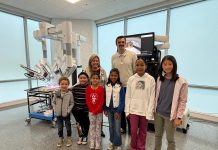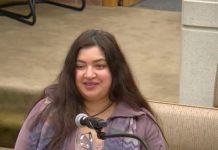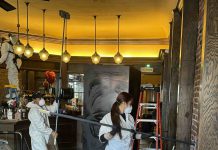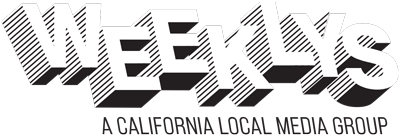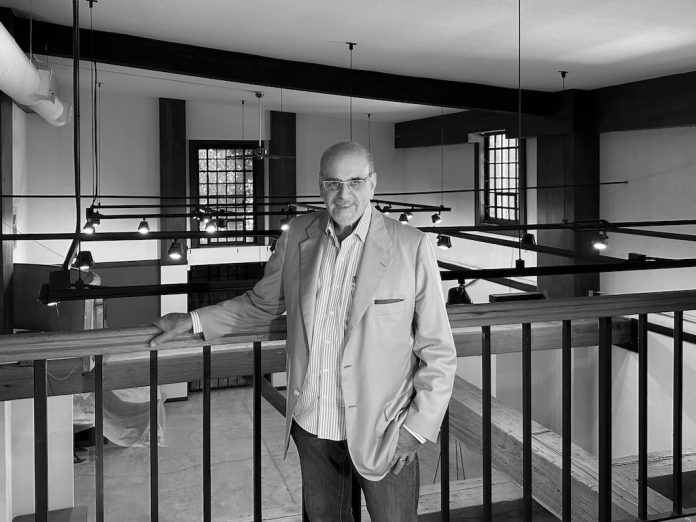
Los Gatos has seen its fair share of change over the decades, due, in part, to its small-town desirability during a period when wealth poured into Silicon Valley.
But even with the abundance of new money, in a rapidly-shifting economy local officials have their work cut out for them to carefully address the pressing needs of residents.
And a big part of that is making sure the locals have a voice. In this spirit, Los Gatos Mayor Matthew Hudes agreed to a sit-down interview with the Los Gatan, to answer a series of questions collected from submissions provided by town residents and business owners.
The intention was to record the perspective of the Mayor on the town’s trajectory, while getting him to address more immediate concerns, too.
The responses shared by Matthew Hudes in the interview, conducted at The Club at Los Gatos, with Faizi Samadani are his personal views, not statements on behalf of the Town or the Council.
The piece has been edited for length and clarity.
How has your time as Mayor been, and what’s something unexpected that’s happened?
My time as Mayor is my fifth year on the Council, and prior to that I served for five years on Planning Commission. And before that I served on other things like the North 40 Specific Plan, General Plan, Housing Element (committees) and some other things. There is a change when you become Mayor. And probably the most surprising thing is how much (time) that I’m spending in Los Gatos, with all of the activities that are going on. And my appreciation for the town has only grown. The Mayor’s role is to set the agenda in collaboration with the Town Manager. Having listened to concerns about so many things over the last five, ten years, I now have the opportunity to actually put them on the agenda to have them considered.
The most unexpected thing is bumping into residents who express their love for the town and their desire to keep the character of the town. I believe it’s because they’re worried that it’s going to dissipate or disappear—the character of the town. Part of that is the residential character, part of it are the wonderful hillsides that we’ve preserved, the architectural districts and homes that we’ve preserved.
And many of them were recent immigrants, folks who maybe made some money in tech and were able to move into town. But they chose Los Gatos over other communities that have equally good schools, and other things, because of the character of the town. And they urged us to do what we could to preserve the character of the town. It tells me we have something worth preserving and it goes beyond just some folks who’ve been here a while, wanting to keep things as they are. That it’s something that is truly remarkable and something that’s really hard to find. Once you remove the characteristics of a place—like the architecture, the hillsides, the access to the creek trails—it’s almost impossible to get it back.
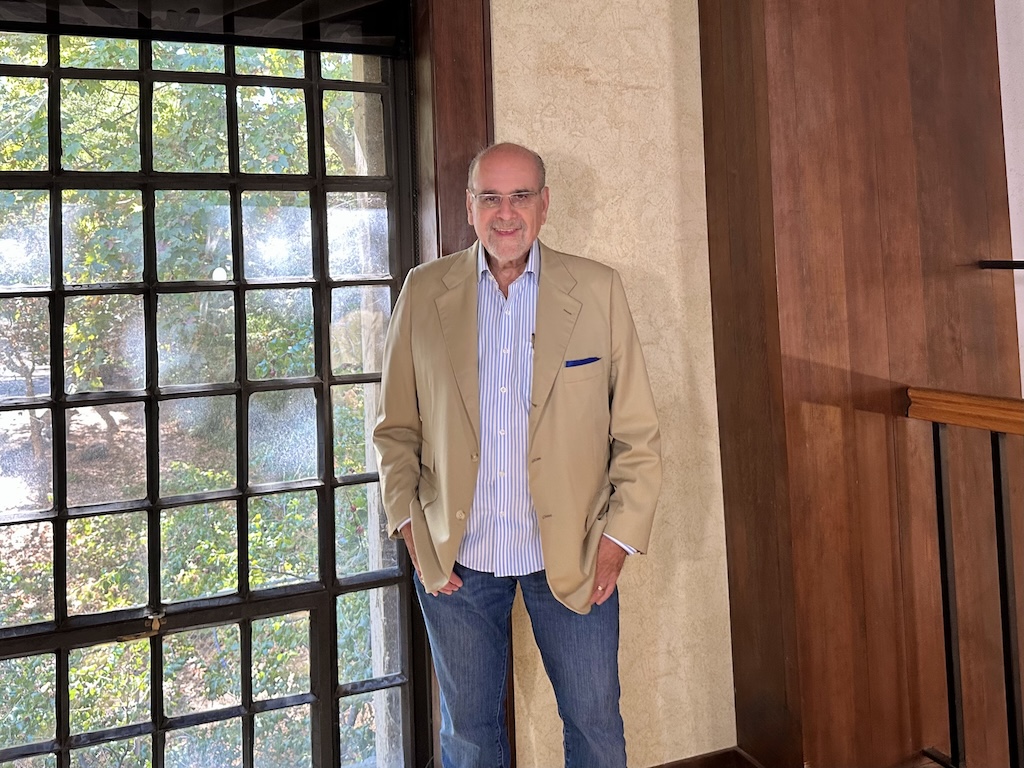
What are a few of your favorite things about Los Gatos?
I love the hillside and the architecture. But more than that, I enjoy the people that I meet here all the time—and the range of backgrounds that people have. We have a ton of volunteers who want to serve.
What has been the most difficult thing you’ve had to face as mayor?
First of all it hasn’t been very difficult, let me tell you that. Probably the most difficult thing is to understand what are the limits and boundaries of what the Town can do. We’re a town of 32,000 people and our budget is a very small fraction of the County budget. We receive our funding indirectly through property taxes that are paid to the county and then come back to us in a small amount. So, I always have to stop and say, well, can we really do this? And sometimes I’m really disappointed that we are not able to do more, because people would like more. Things like E-Bikes, beach cut-through traffic.”
‘We need to work wayfinding app and companies to limit the ability of people to enter a fire hazard zone on a fire hazard day.’
Can we expand library hours for students? They work late.
We definitely could consider that. The question is going to be the impact on the budget to do that and whether the expense matches the strategic priorities of the Town—where we are doing other things with the limited budget. First of all, we have a fantastic library, it’s really treasured by our residents. We never joined the County system, as many other cities have. But it’s expensive. The library and the library director do an excellent job, but they always point out that they are constrained by the budget they have. Two things that have happened that have really challenged our Town’s resources. One is unfunded mandates from the state. The second thing is we are facing a real tangible threat with wildfire here, and we have to step up in terms of public safety. This wildfire advisory committee that I’ve been working with has identified $45 million worth of expenditures over the next 20 years.
Tell me a little bit about your backstory, about working in biotech and living in Silicon Valley during different eras?
My wife and I moved to the Bay Area in 1978, and we both participated in the tech economy. In 1984 I finished my MBA and I moved into consulting in tech. But then I found I was even more interested in serving biotech. I learned a lot from serving companies like Genentech, Gilead and Amgen. I learned about how they looked at fact-based decision-making and evaluating risk, and doing risk-adjusted strategic planning. As a consultant, I learned that you really need to get things done through influence rather than authority. Build the facts, build the argument and influence and convince people was more important than authority.
What do you see as the trajectory of Los Gatos?
We need to understand and value the character, and heritage, of the town as we guide it into a future that has new challenges and requirements. If we just jump to the future without understanding where we came from, I don’t think it’s going to be a good place. We are going to face a lot of change. In the 1970s there was a push to have much higher density housing in our downtown area, specifically in the Almond Grove District. There were proposals to build apartment buildings there, and we only got one of those, and that’s the one on Main Street.
How do you balance old retailers with new ones coming in?
There are two ways to level things. You can put restrictions on the new, or you can open up possibilities for the older ones. And we actually did that. We removed a lot of the constraining conditional use permit regulations.
What’s going on with plans for a community center?
Los Gatos doesn’t have one. All of our neighboring communities have that. We need a place where people can come and talk to each other in person. Get off of their phones and social media, and have opportunities for classes and discussion groups, debates and larger events. A dedicated concert venue might be challenging, but an all-purpose room that could seat 500-600 people is very feasible. The community center is a priority for the residents. It came out of the older-adult group, but it really became intergenerational. A foundation was started to raise the funds for a community center called Los Gatos Thrives Foundation.
Can you explain your slow-growth approach that resulted in the Housing Element being a year late, which opened the door to Builder’s Remedy projects?
There was one hearing in June of 2022, on the sites inventory, and I was in the minority. I voted to provide guidance on the Housing Element, and that failed. The Council passed—on a 3 to 2—without any guidance. At the very end of 2022, there was a vote to bring the Housing Element to the Council in January, but, again, we didn’t consider it. The Council adopted a flawed Housing Element that was not in compliance on Jan. 30, the day before the deadline, despite advice from Town staff that it was compliant. Which is why I voted for it. The Housing Element was submitted to the State without review by the Council on March 31, 2023. It wasn’t until 2024, with a new Mayor, when the Council started to actually review the Housing Element and make changes. And by that time, we were out of compliance—and that’s why we have so many Builder’s Remedy projects.
Can you validate residents’ concerns over SB 330 and Builder’s Remedy?
Unfortunately the approach was to try to piggy back affordable housing on market rate housing, rather than to directly fund affordable housing. I think we would have gotten a lot more affordable housing if it was directly funded by the State. I think the Town has rightly taken its responsibility in planning for 1,993 units by identifying appropriate areas for that development to go—where the infrastructure is either in place, or can be put in place. The impact on residential neighborhoods has been weighed carefully, looking at water, traffic and other infrastructure considerations. However, SB 330 and Builder’s Remedy has now opened us to a situation where, I believe, over 50% of our applications are not on those sites that we analyzed.
Is there a way to address the beach traffic issue? Could make Highway 17 a three-lane highway? Or make people pay a toll to drive through town during certain hours?
I think there’s more that we can do. The reason I’m not satisfied is that it’s not a convenience issue where we have to respond to complaints. It’s a safety issue. Because the highest hazard days are the highest beach traffic days. It’s only a matter of time until there is a wildfire when we have beach gridlock going on. So, we have to do more. The people have to get out, and our responders have to be able to get in. We need to work with wayfinding apps and companies to limit the ability of people to enter a fire hazard zone on a fire hazard day. Other ideas are to dynamically change the flow of traffic, not permanently, but let’s do it in response to the way that traffic is actually flowing. I have been working with the CEO of the VTA. And we want to partner with VTA to find ways to dynamically reroute traffic, so that we can keep some of the neighborhoods safer. VTA and Caltrans are responsible for highways 17, 85 and 9, so we can’t make changes to those but we can work with them.
Can the Town address the homeless issue by designating a program and vacant building for them?
I think we can and should do things for our unhoused residents here. Our primary interface with our unhoused residents is our police department. The police department is excellent in reaching out and knowing the issues. We’ve enacted a number of things to help the situation with some of our unhoused residents. We put a temporary restroom in. We approved a project to put in a permanent restroom, however we don’t have the funds to move that project forward at this point—but it’s one of our Capital Improvement Projects. I had a suggestion for that where we do something where it’s a self-cleaning facility, perhaps provided as a complete unit, rather than building a brick-and-mortar restroom and shower facility. There are solutions for that and we have approved money and funds to do that. The other thing that we’ve done is to approve a shelter program for days when it’s just too cold or too hot, in our local hotels under the control of our police department.
‘It’s a privilege to serve and to represent our town residentS.’
What can we do about the issues with e-bikers?
Town staff is evaluating whether—and what—the Town can reasonably do. The Town is not a State agency. It’s not a DMV. But there’s more that we can do. It’s something that’s in progress. I do think that one of the things that was left out of that discussion was not just constraining what people can do with e-bikes, but encouraging more people to use them to get around town. It would be a big help in relieving traffic. It shouldn’t also be the “stick,” but it should be the “carrot” to how we get people to embrace e-bikes more in town.
What has been your proudest accomplishment in office so far?
Over the five years, my proudest accomplishment has been jumpstarting services for older adults. They were in a pretty bad state when I came into office. Our population of people above the age of 60 had grown by almost thirty percent, and our services had pretty much crashed off a cliff. It was a terrific effort that I participated in to create a roadmap for older adult services that was endorsed unanimously by the Council.
This year as Mayor, I would say it’s jumpstarting the work on wildfire resilience. I saw what was happening with the wildfires of Santa Cruz, in Hawaii more recently, in LA of course this year, and really felt there was more that we could do. I have a great partner in the Town Manager, Chris Constantin, in moving us forward on this. I’m most concerned about the fire hazard issue, it keeps me up at night. It’s not a sole accomplishment, at all. But it’s something I’m very proud of.
Any closing thoughts for readers?
It’s a privilege to serve and to represent our town residents. But I maybe didn’t say enough about the support of my family: my wife, who puts up with all types of meetings and long hours; my two adult children who not only grew up here, went to the schools here, but also advised me to stay out of doing stupid stuff, haha; and also, Town staff—we have an incredible, talented and dedicated Town staff. A lot of folks could take a job in a bigger municipality that maybe offers either more money or career opportunities. But they love the Town and they chose to serve the town, whether they’re in the police department, or public works, or parks, or the library, or any of those organizations. I very much treasure the support and talent of our Town staff.


